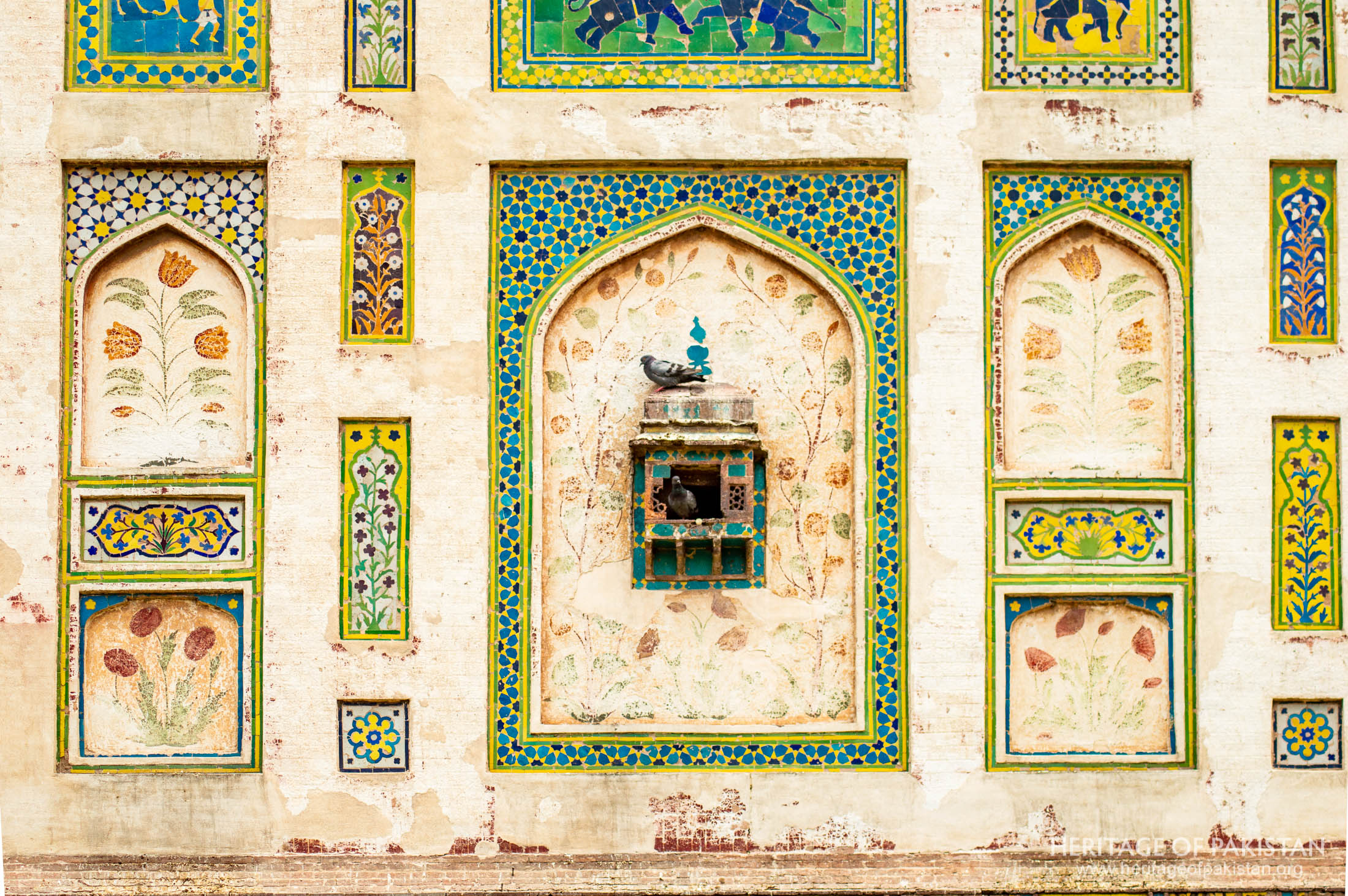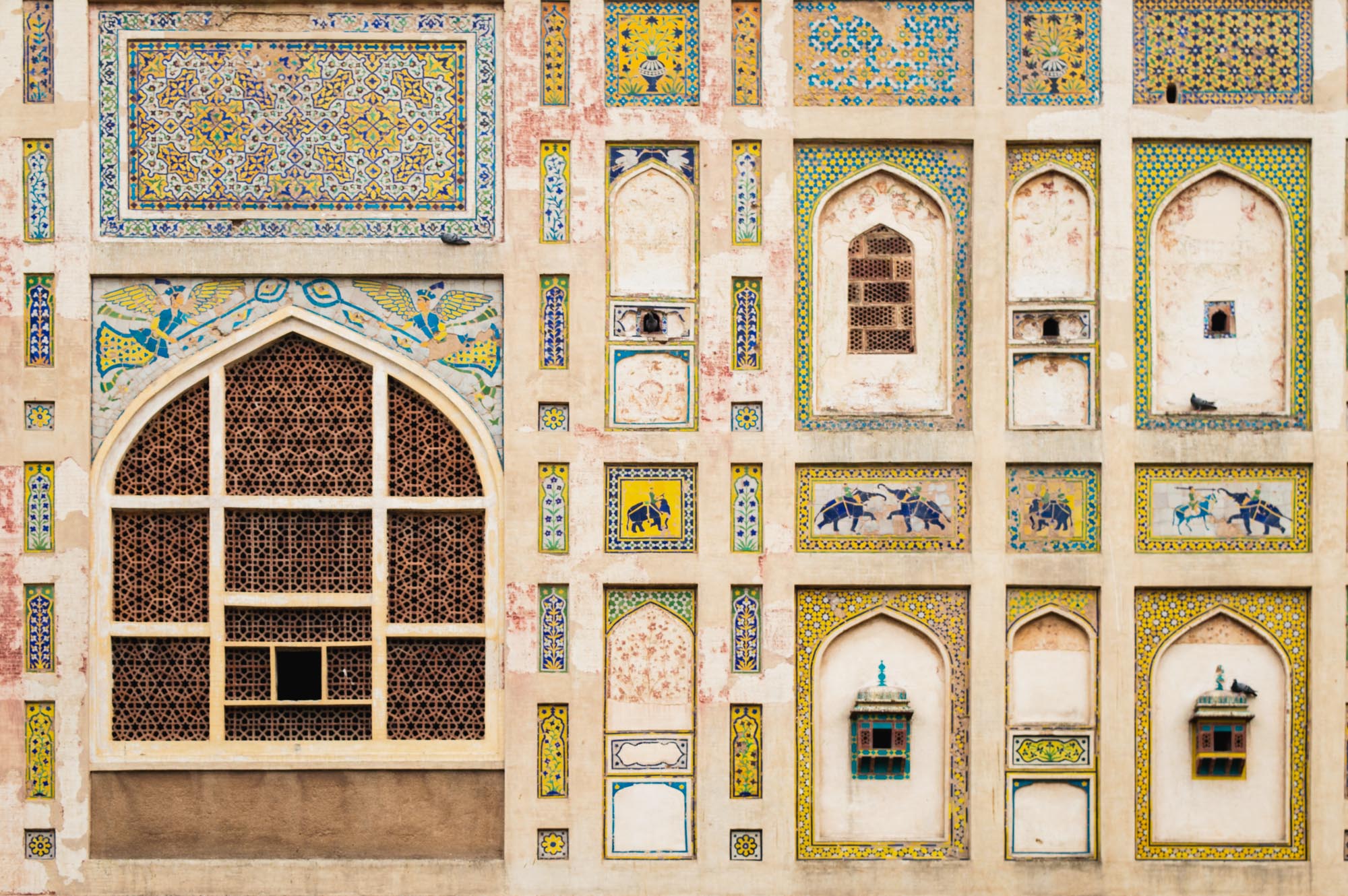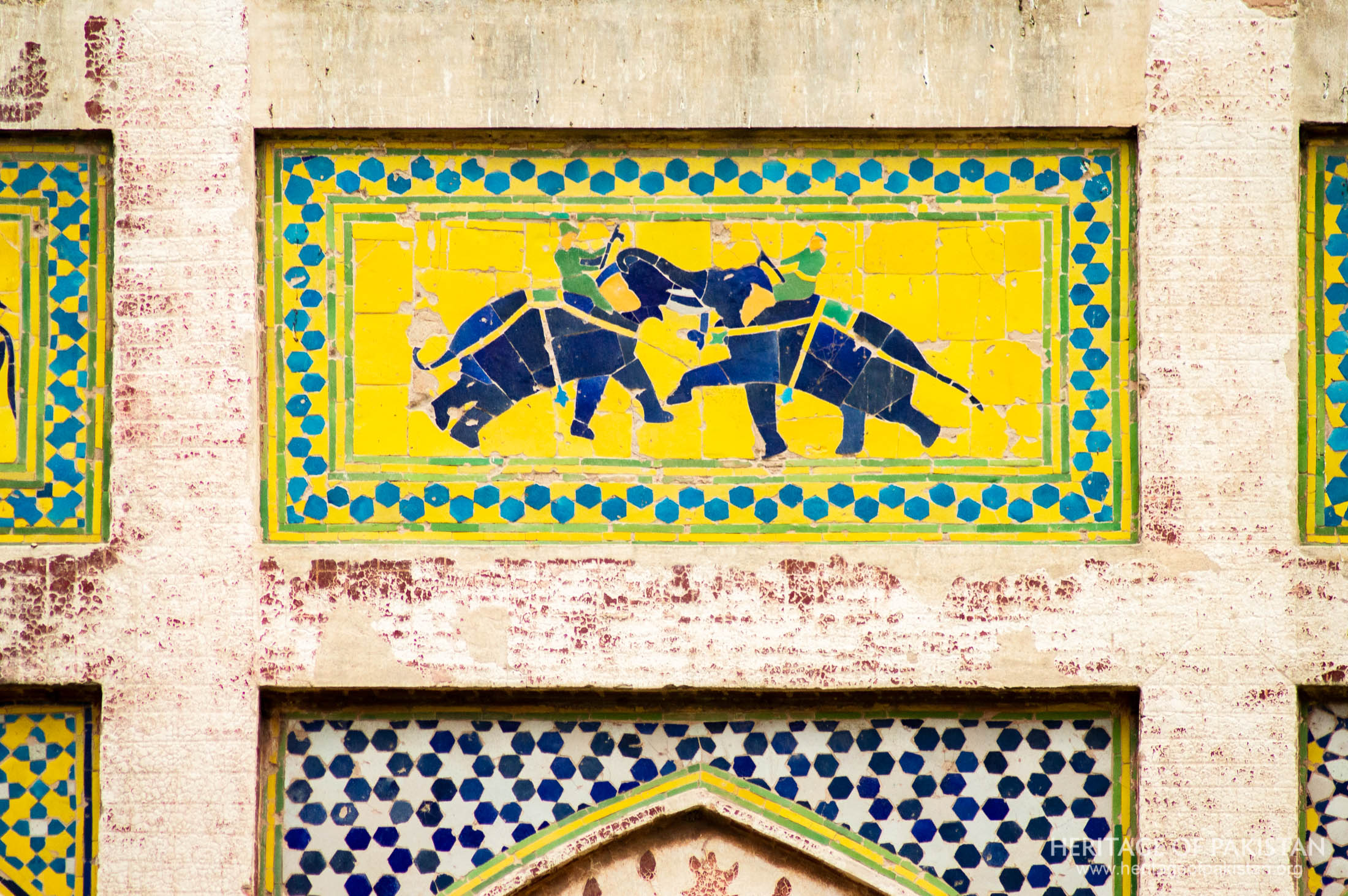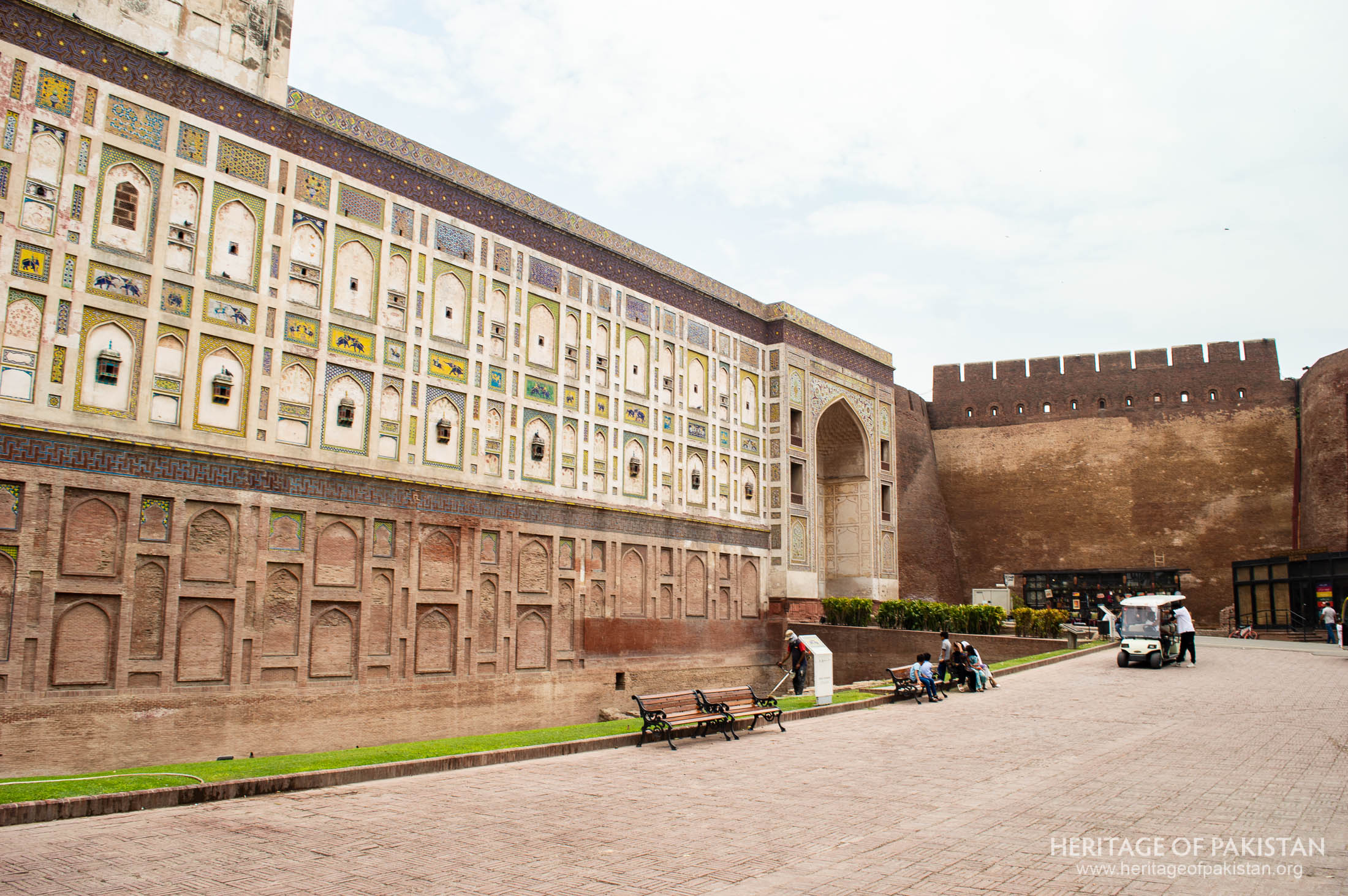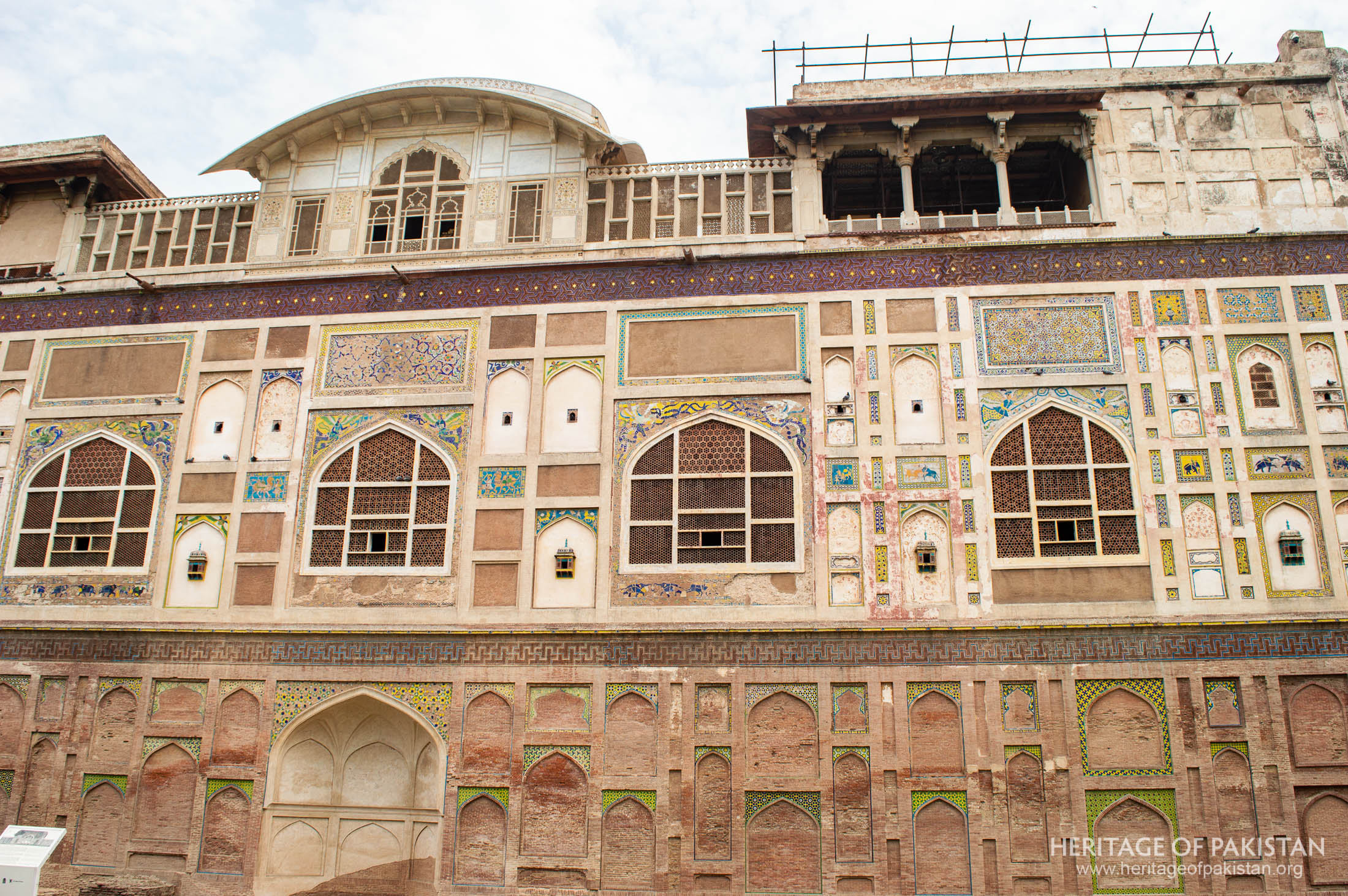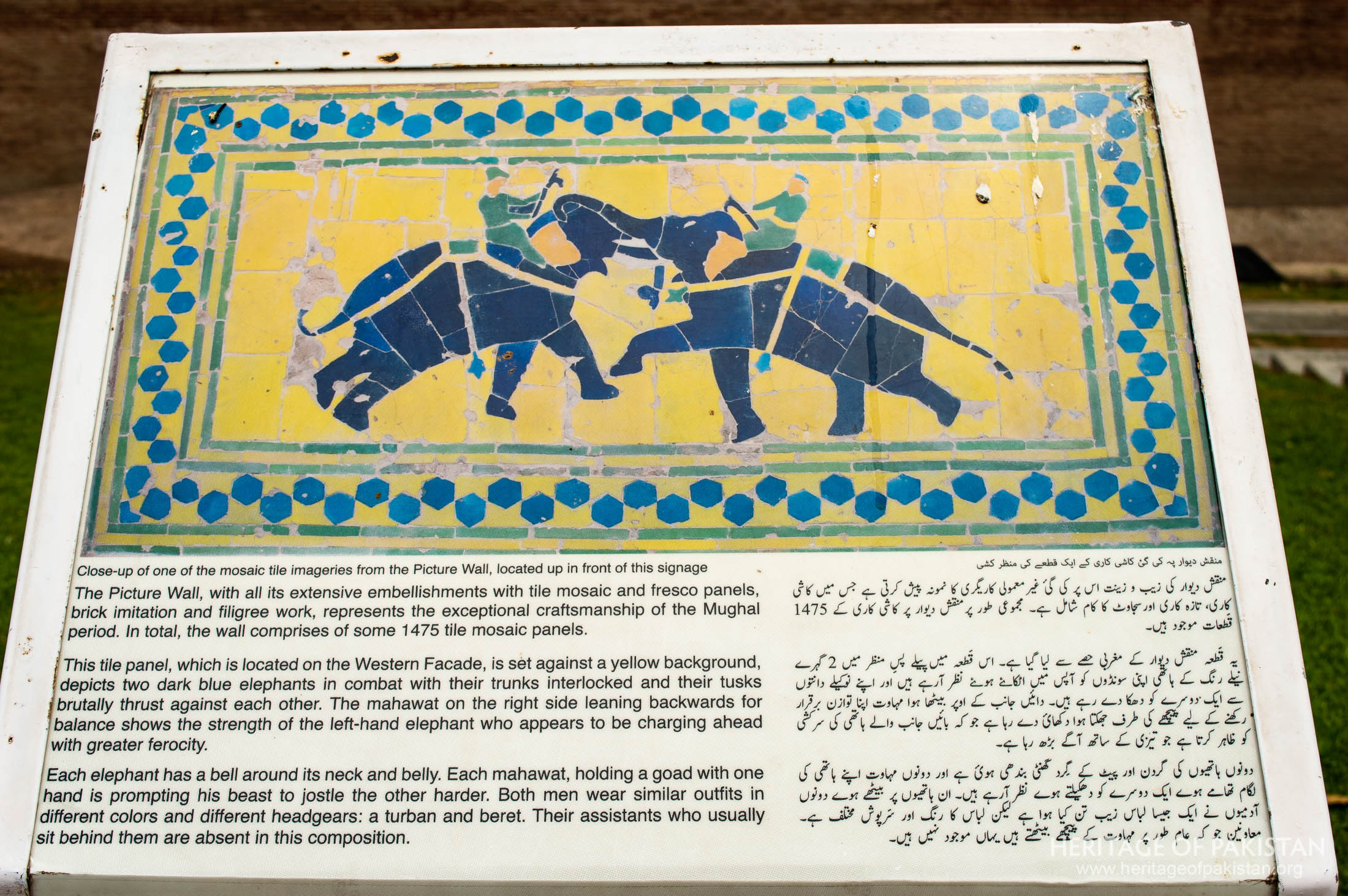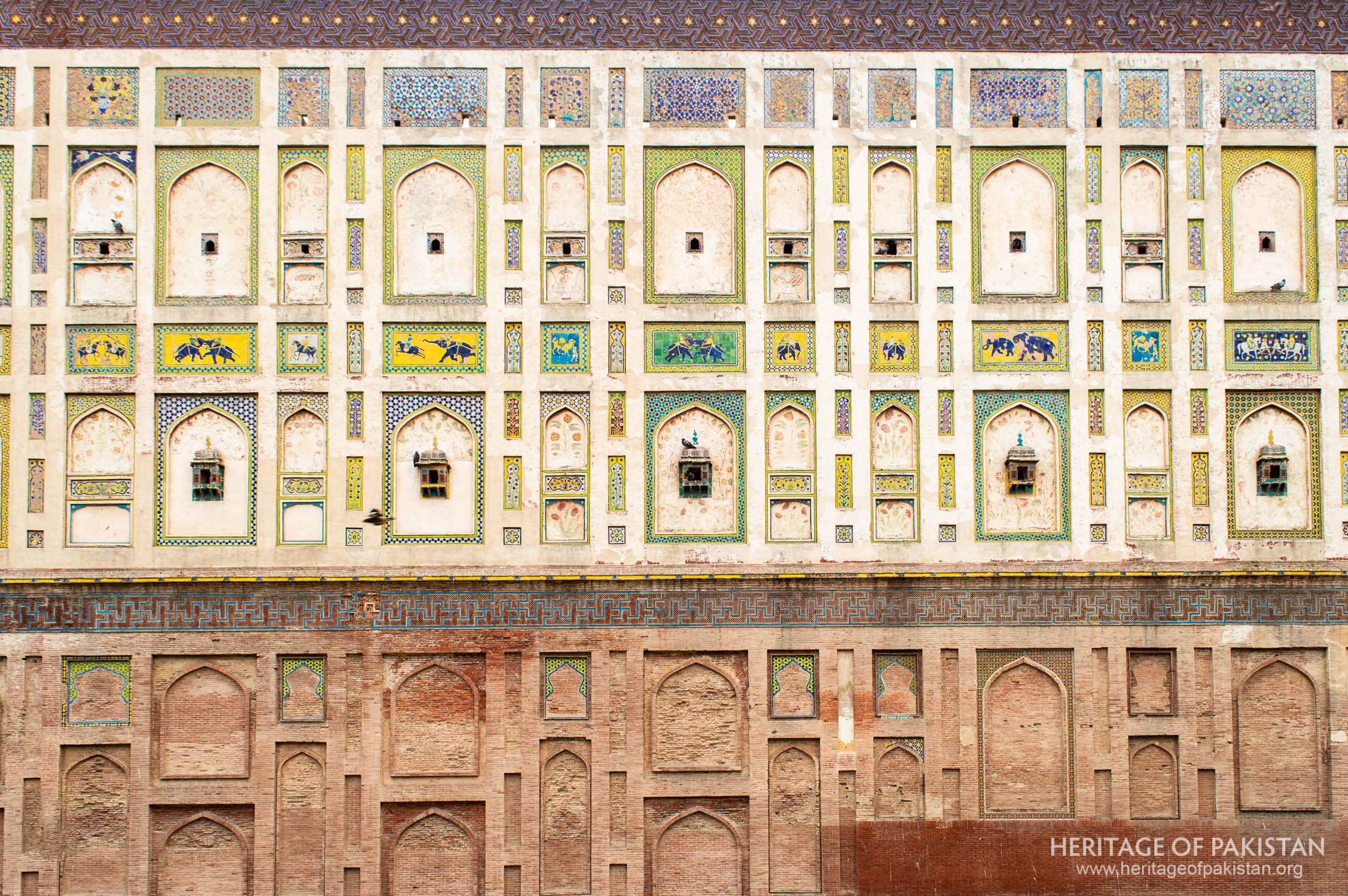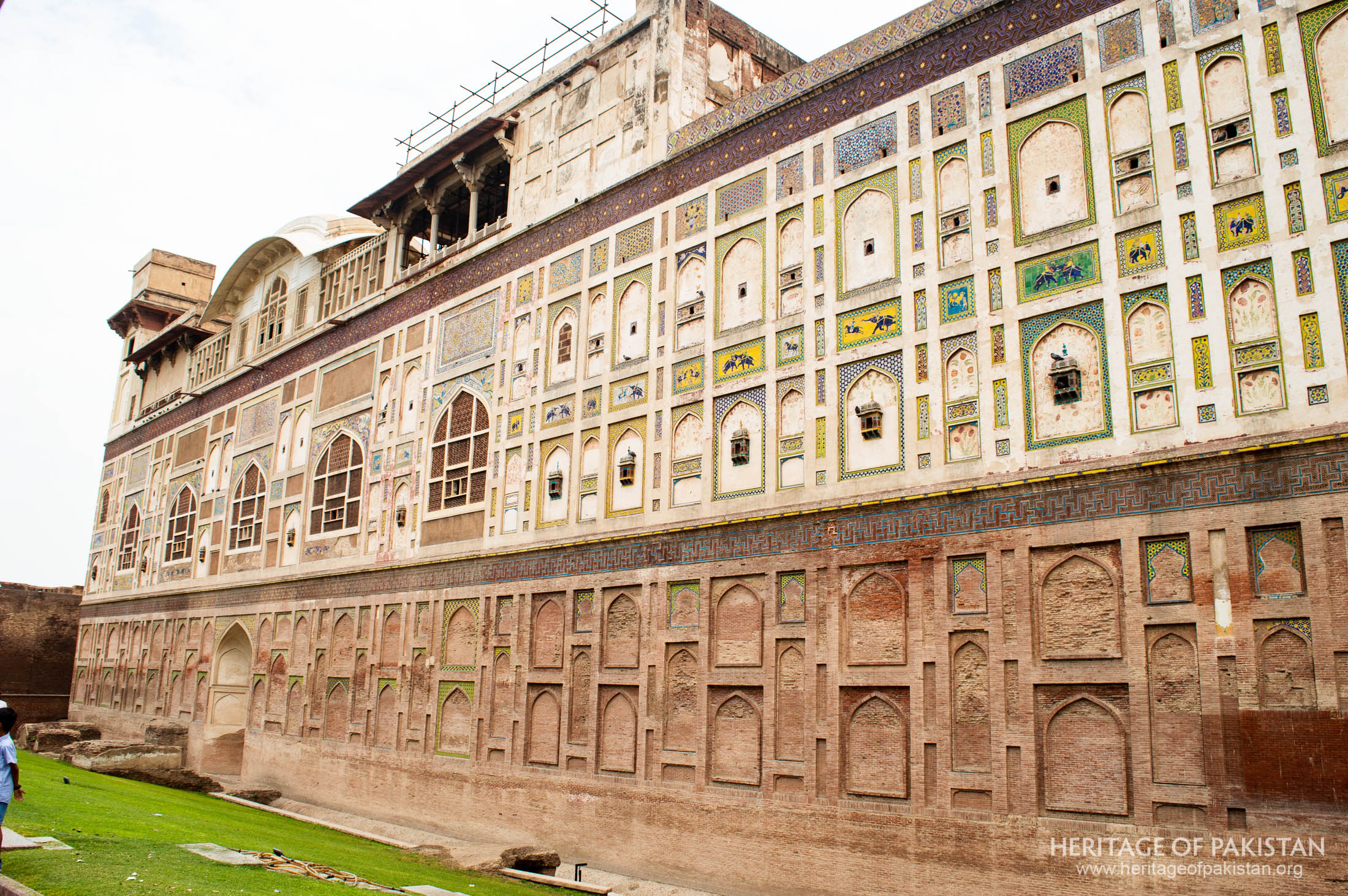Textarea
The Picture Wall is one of the most exquisite features of Lahore Fort
It is a masterpiece of mosaic tile artistry and pictography dating back to the first half of the 17th century Mughal Empire
Constructed firstly during the reign of Emperor Jahangir, with significant contributions by Shah Jahan, this stunning creation spans approximately 460 meters along the fort's western and northern faces
Crafted using kashi kari tiles, the wall is adorned with a vibrant blend of geometric and foliated designs, along with depictions of living beings as well
The mosaics illustrate a rich variety of scenes, including elephants, horses, camels, men, and birds, reflecting the artistic and cultural diversity of the Mughal era
Architecturally, the Picture Wall is a blend of kashi kari (mosaic tile work), frescoes, decorative niches, ornamental jharokas, cut and dressed brickwork, and imitation brickwork.
Arched and rectangular recesses of various sizes are arranged throughout the wall, serving as focal points for mosaics and frescoes.
The Picture Wall is distinguished by its depiction of human and animal forms, an unusual feature in Islamic art that often restricts itself to floral and geometric motifs.
The vibrant mosaics depict scenes of elephants, camels, horses, birds, and men, alongside activities like polo matches, caravans, festivals, and battles
The Picture Wall is one of the most iconic and beautiful features of the Lahore Fort.

